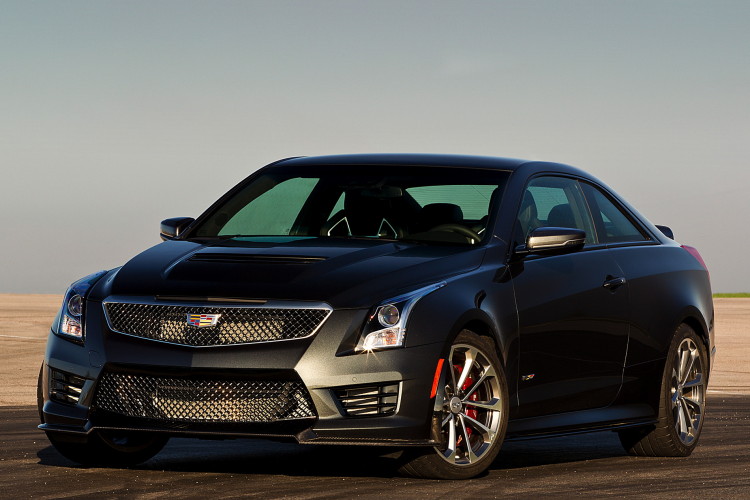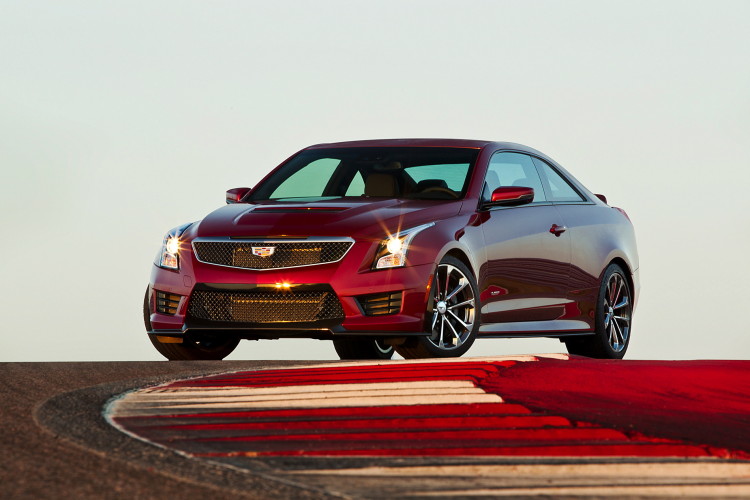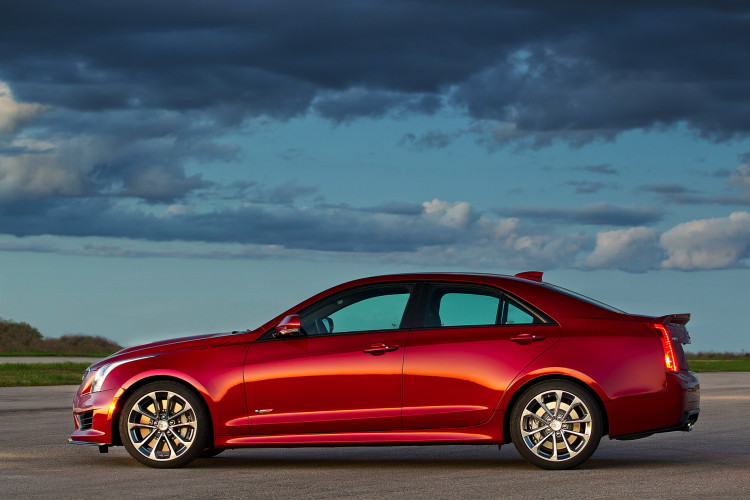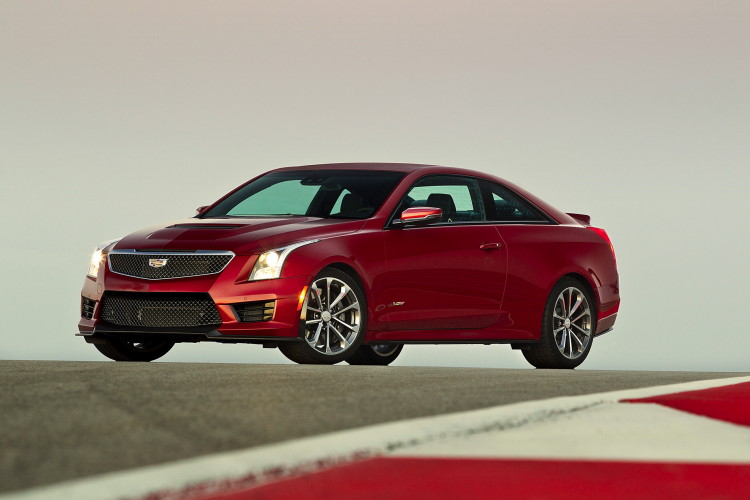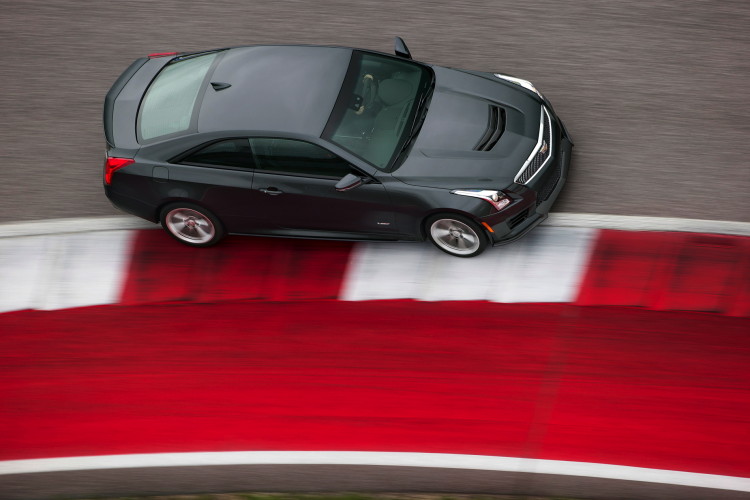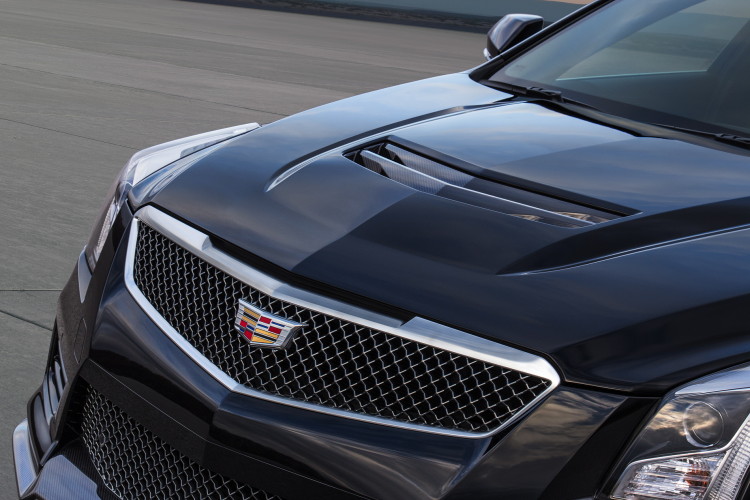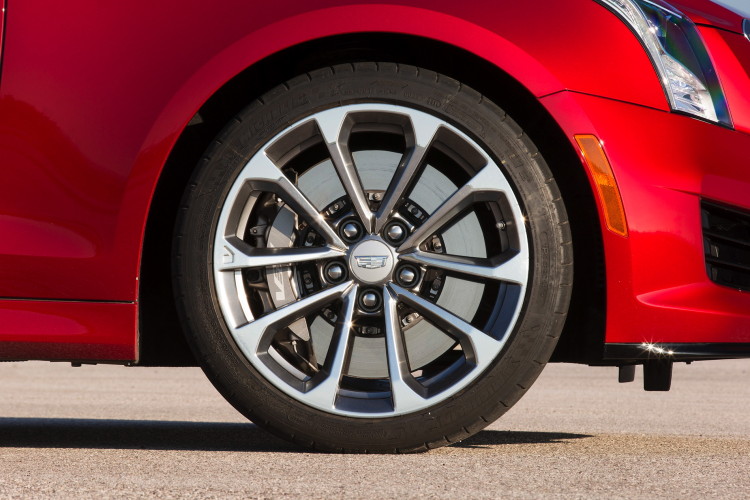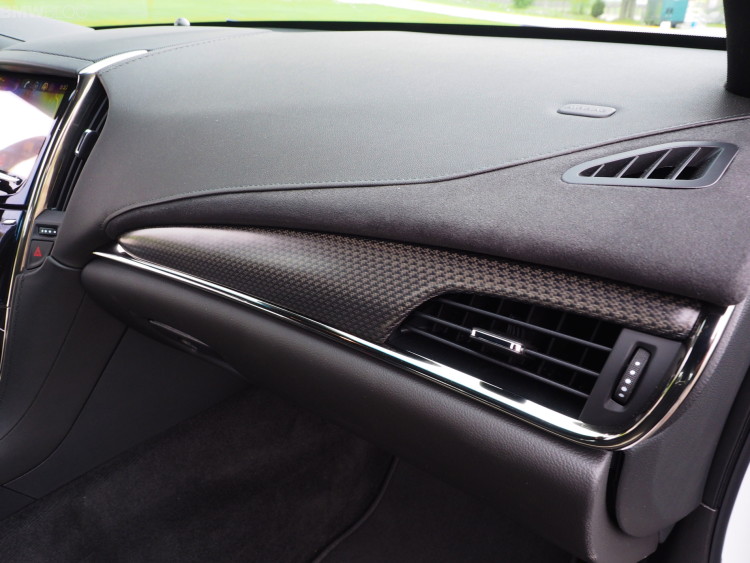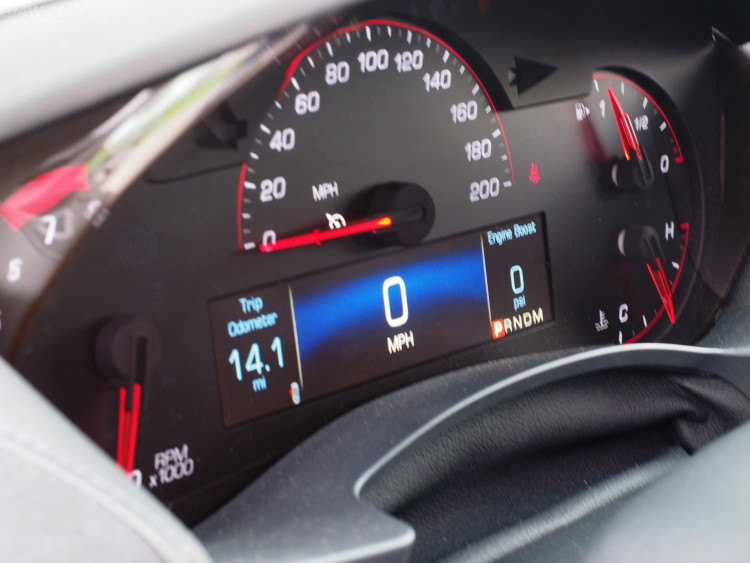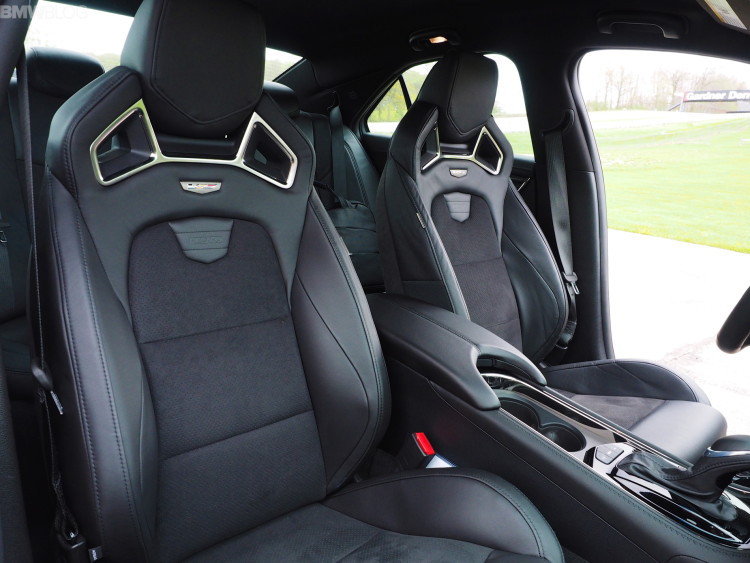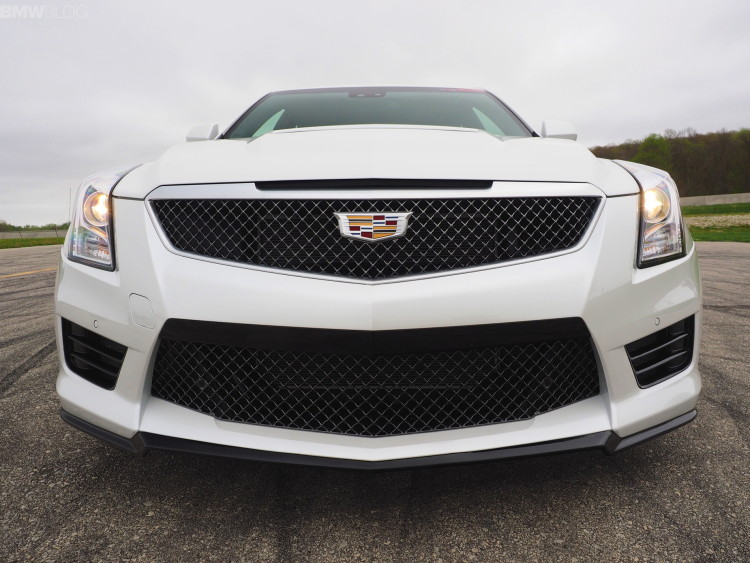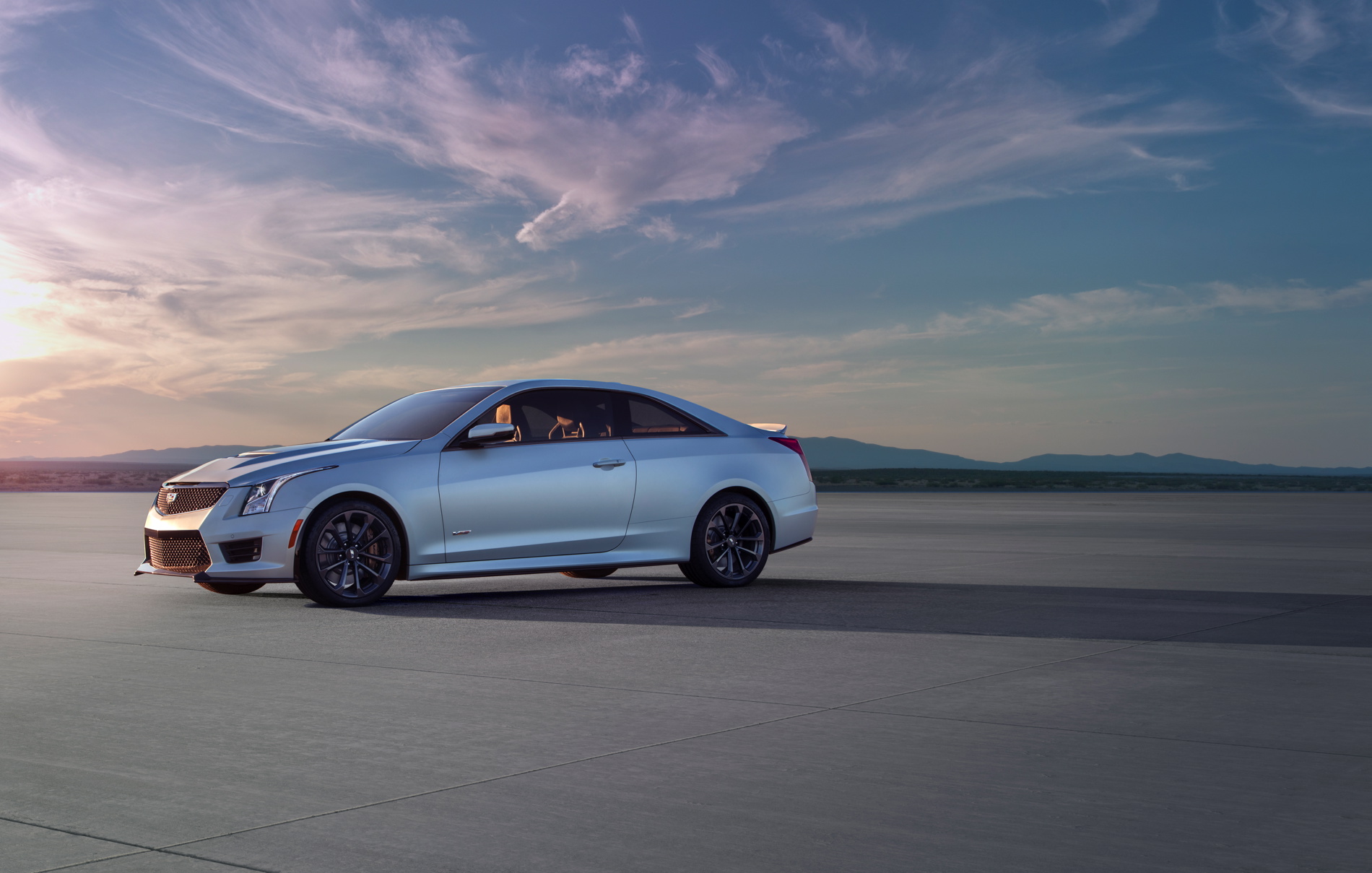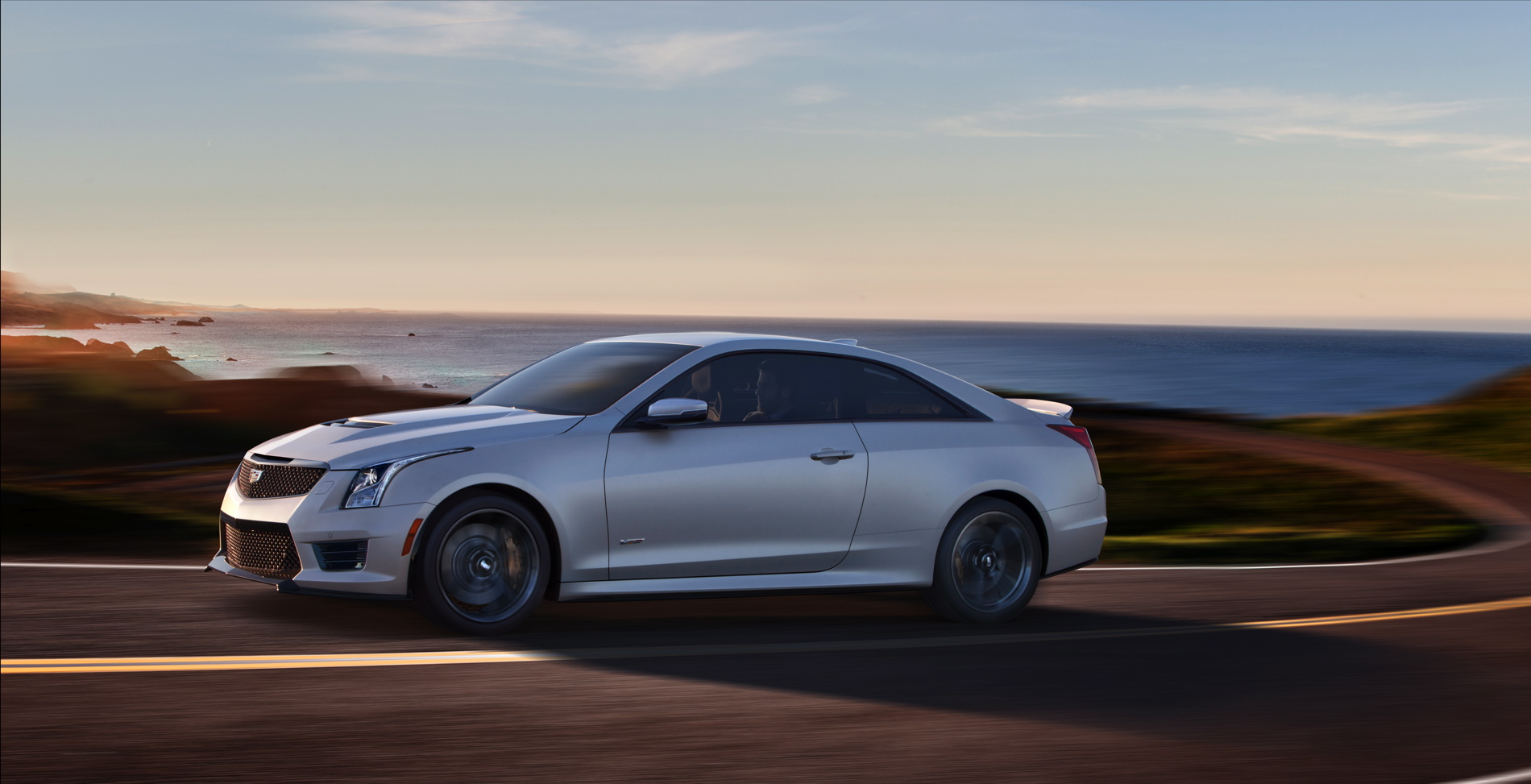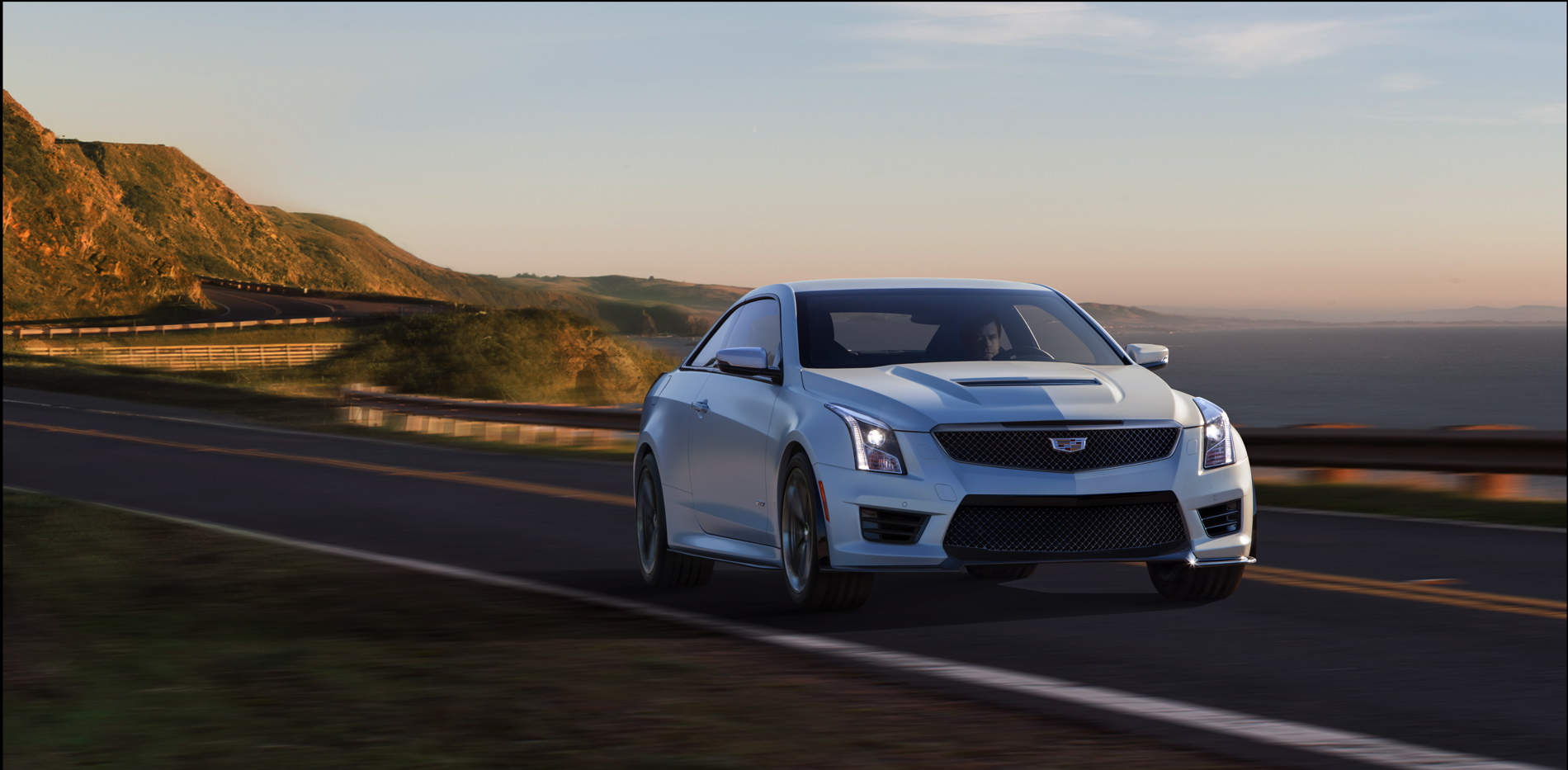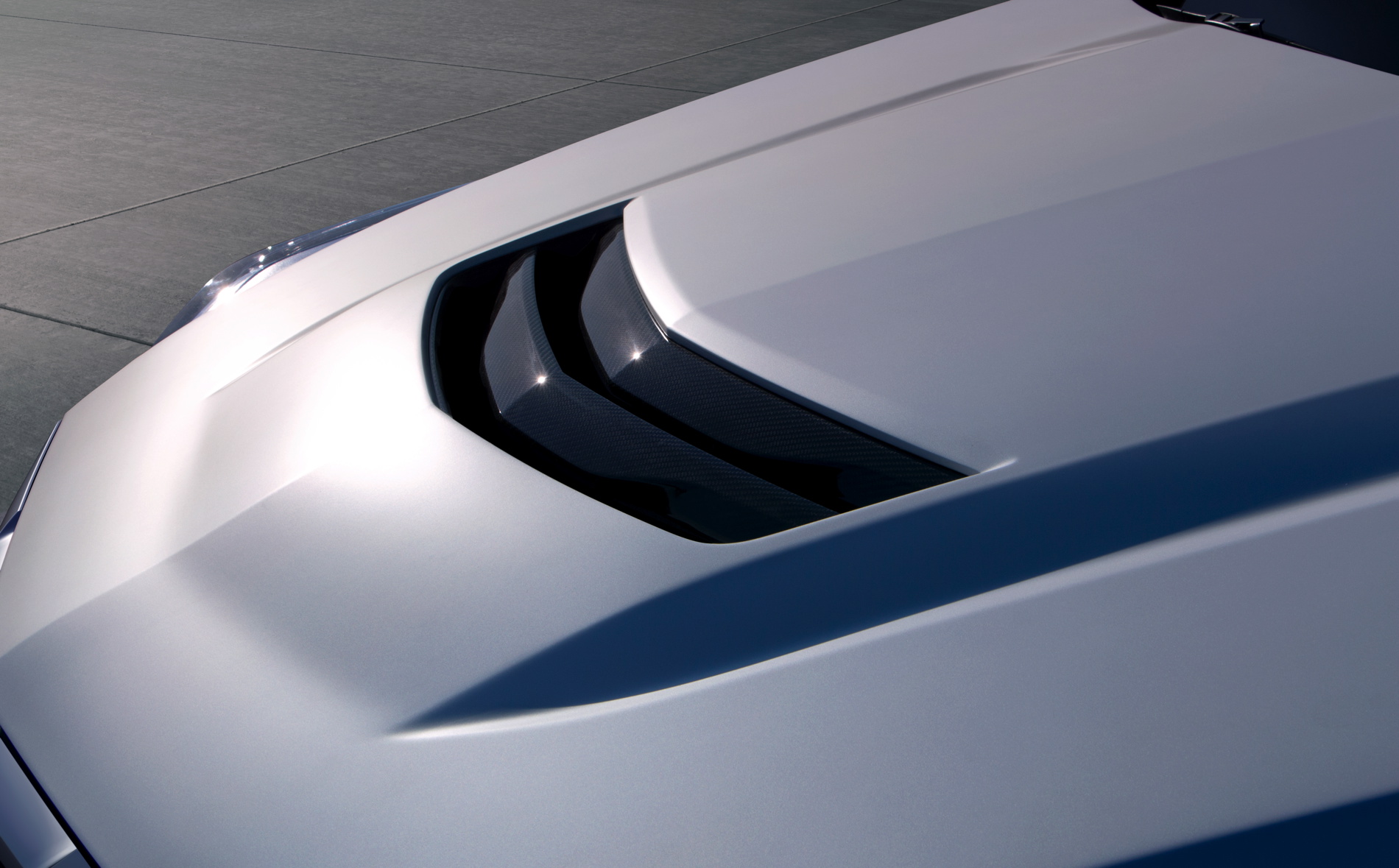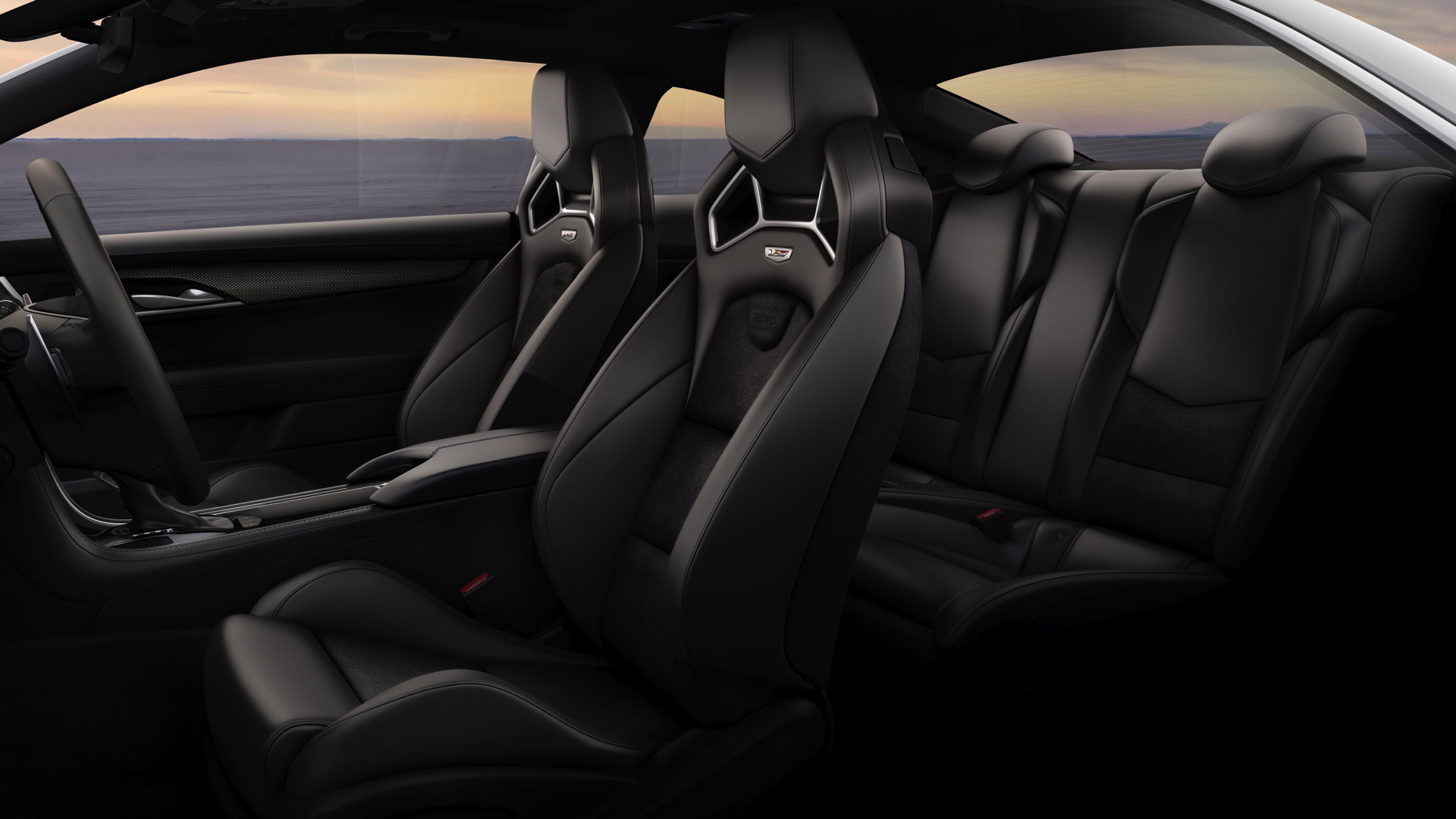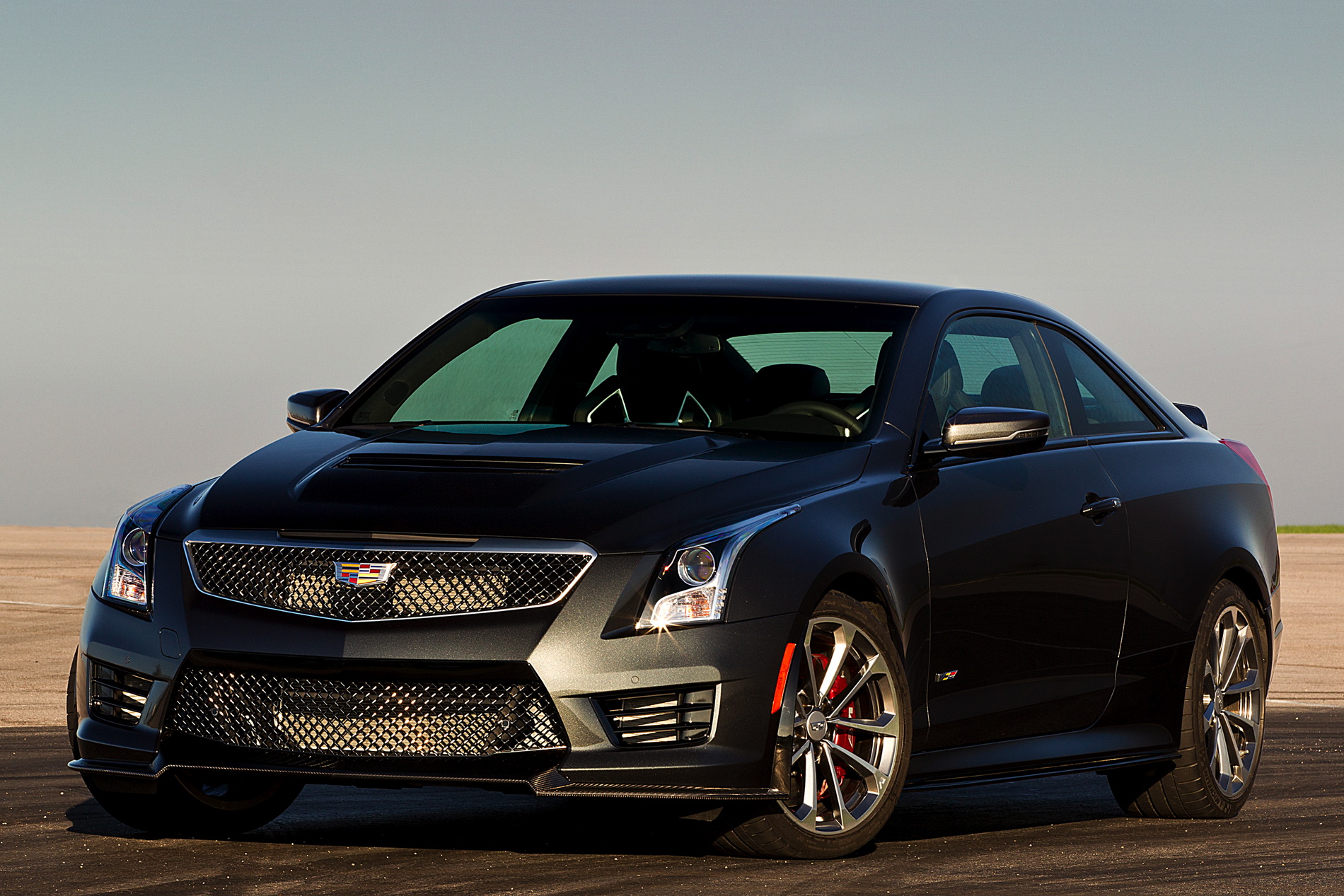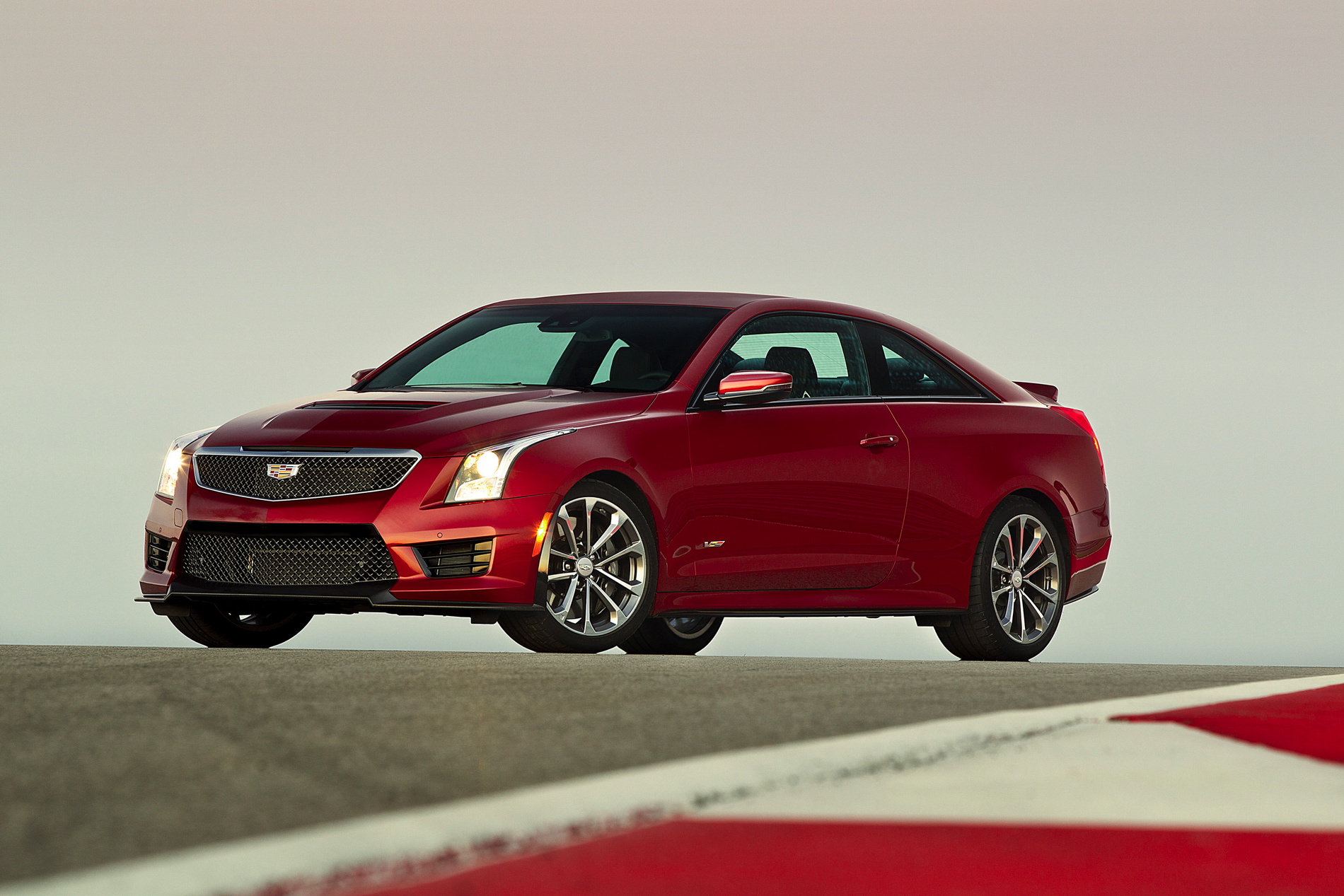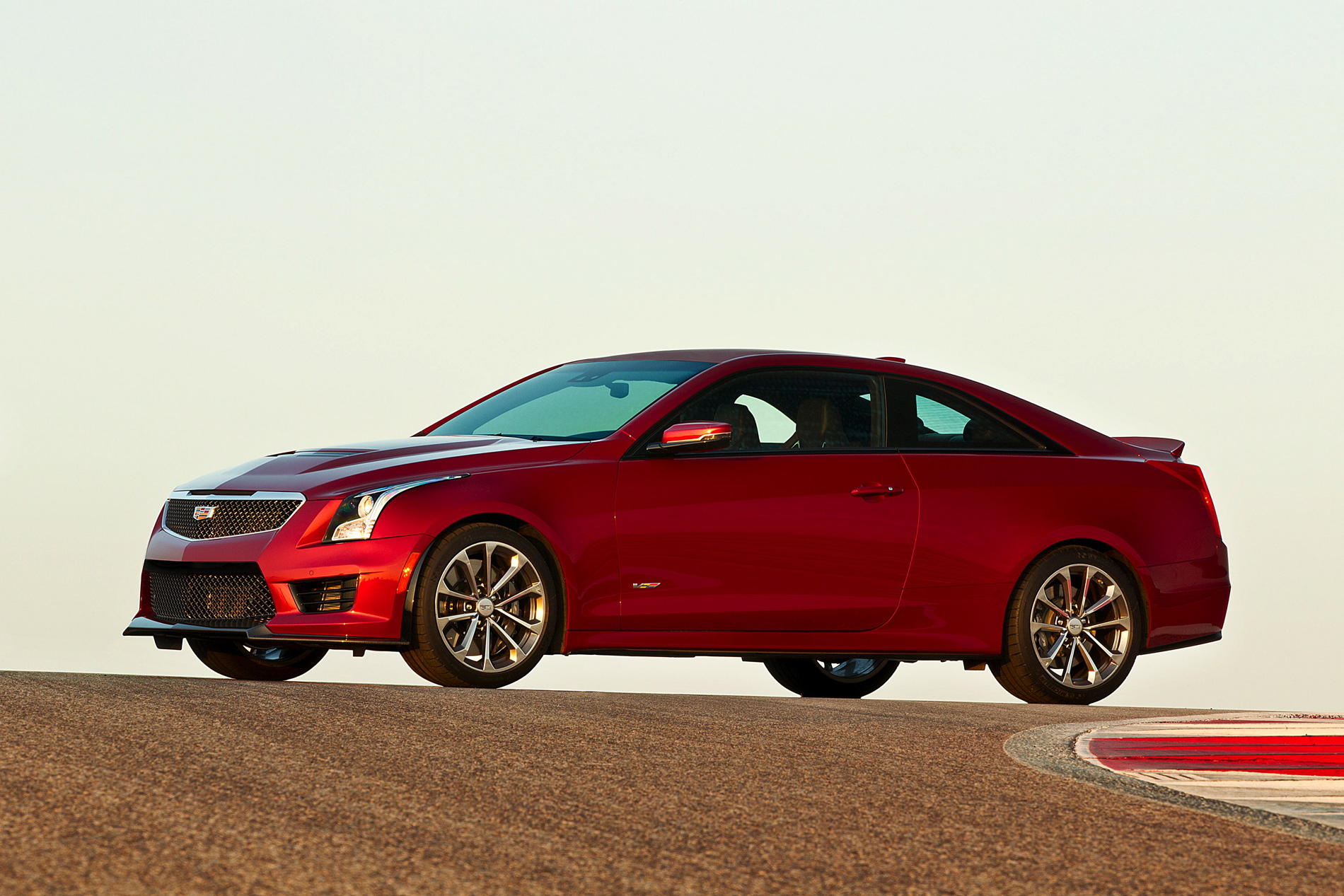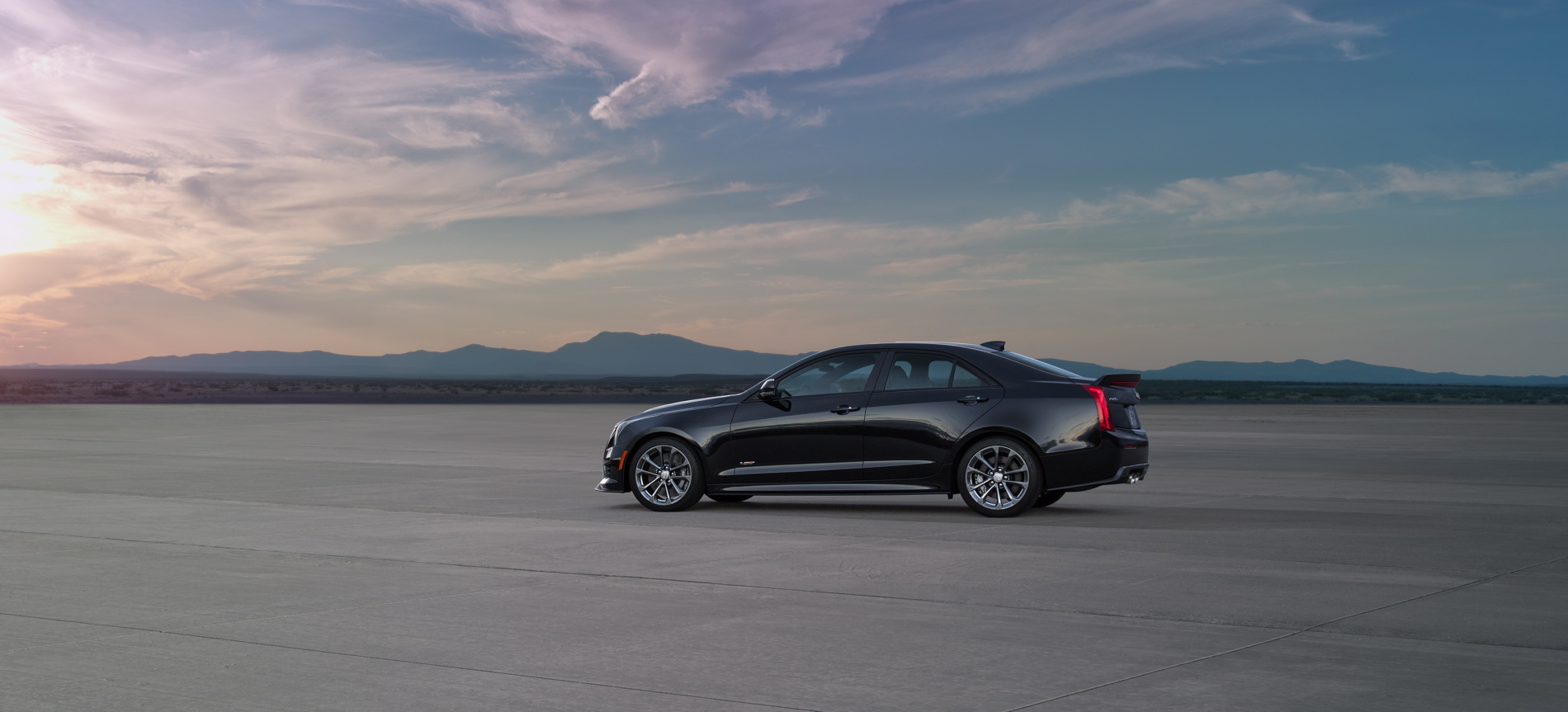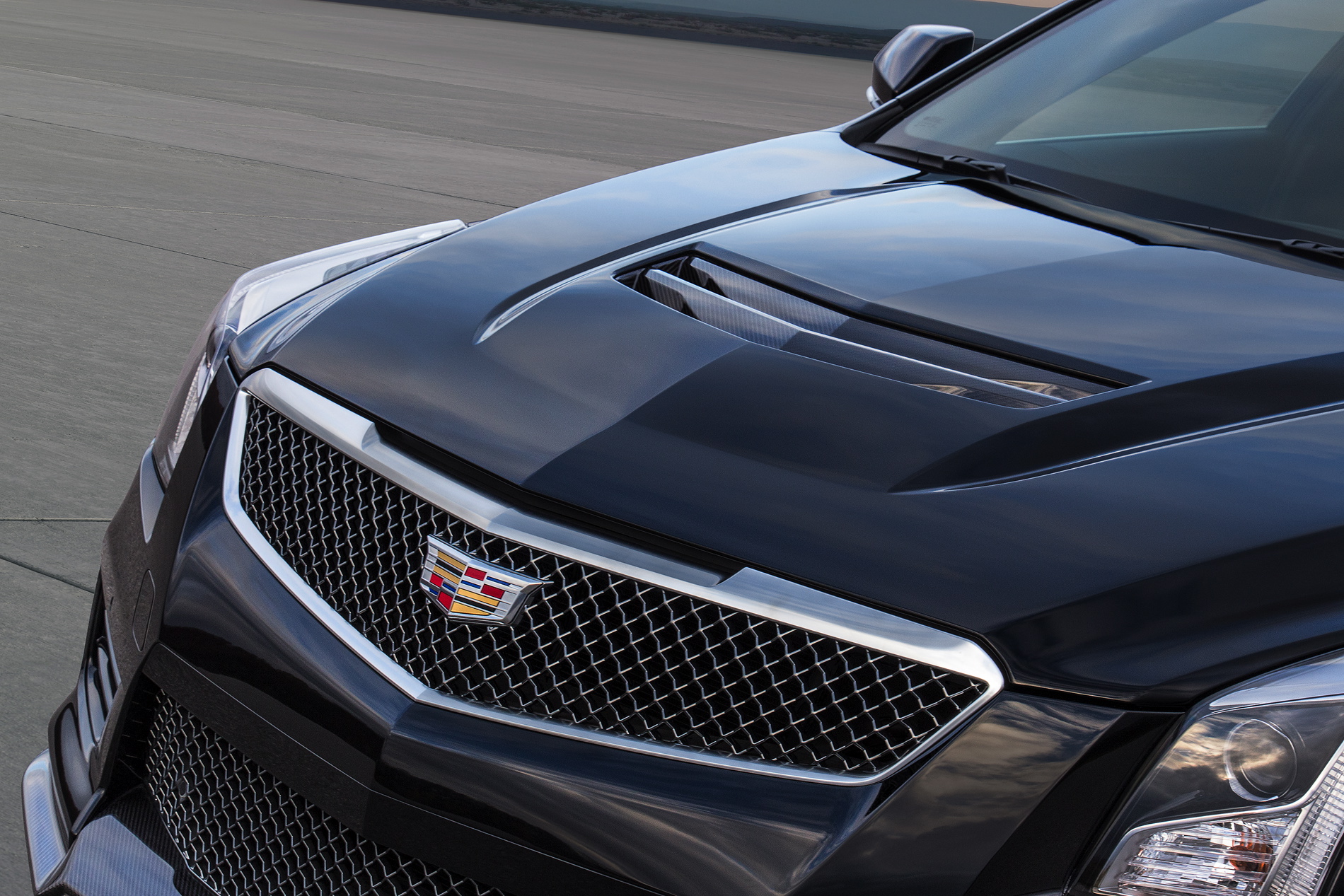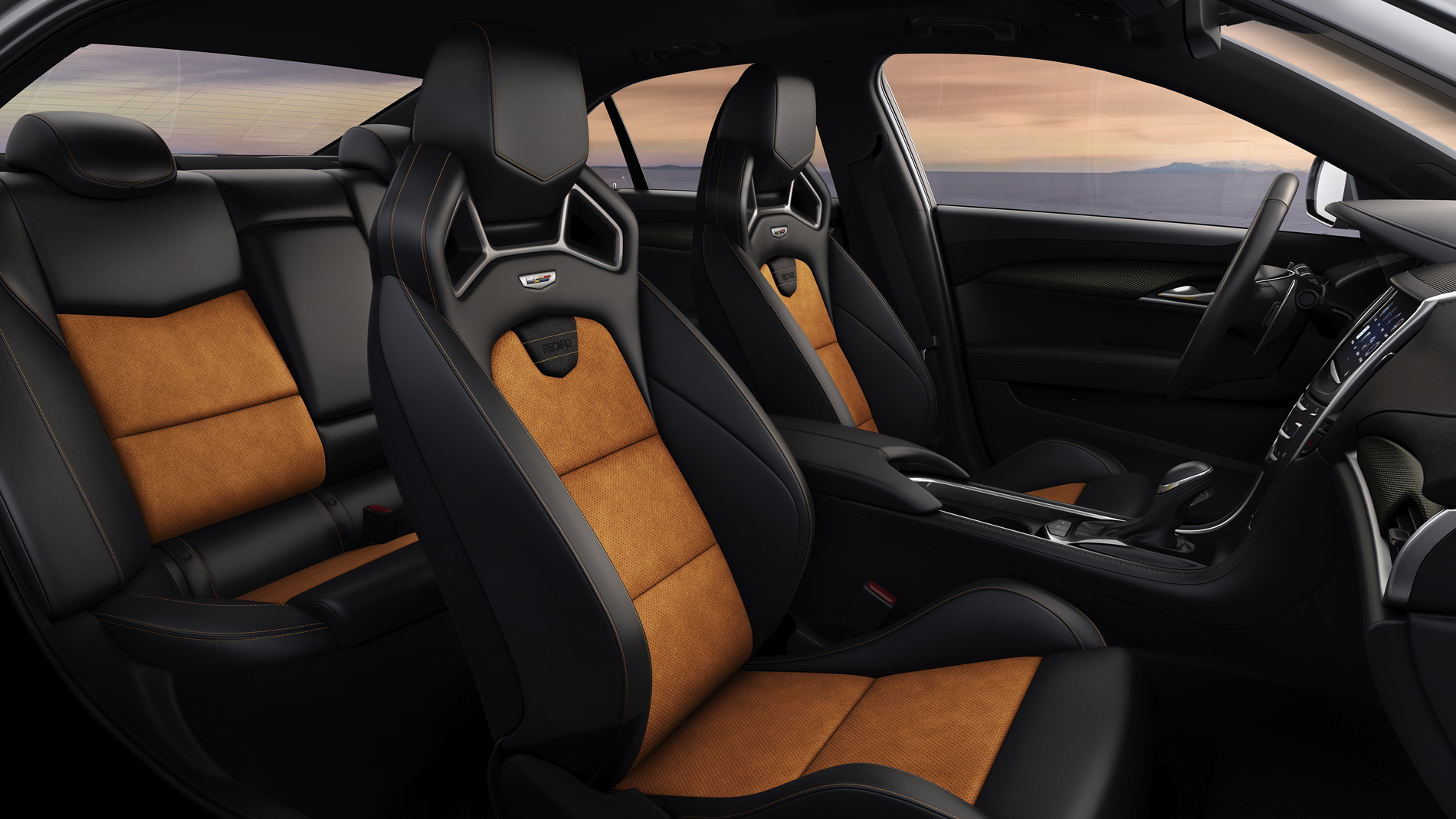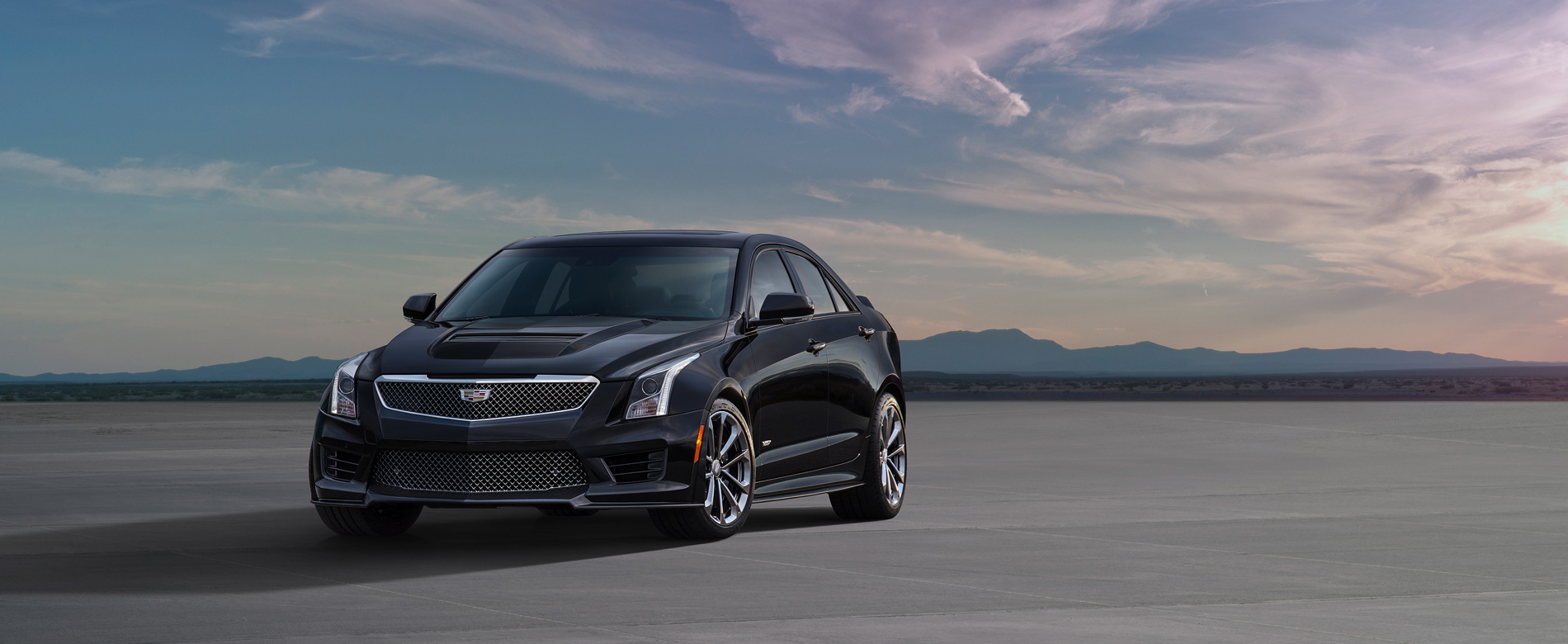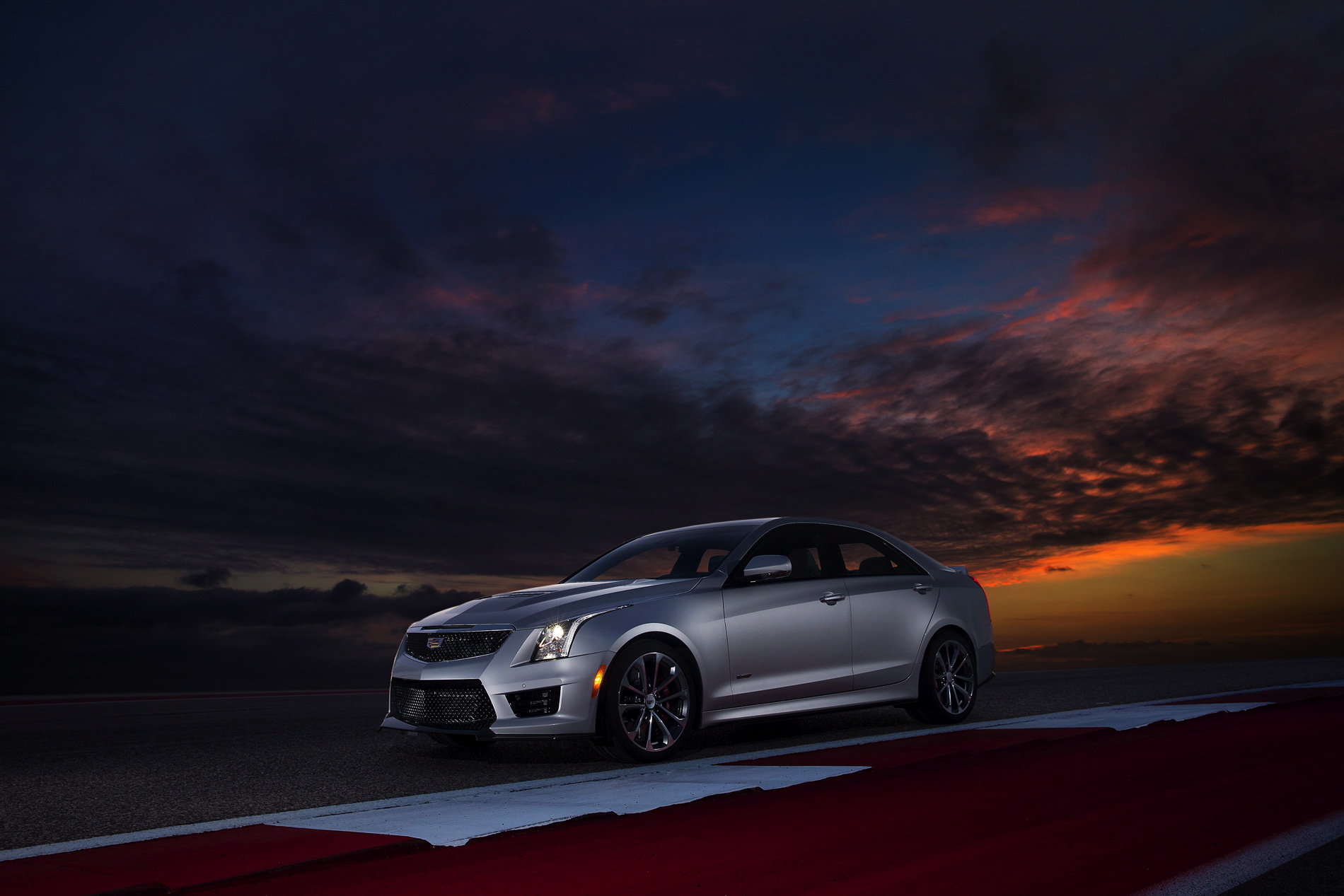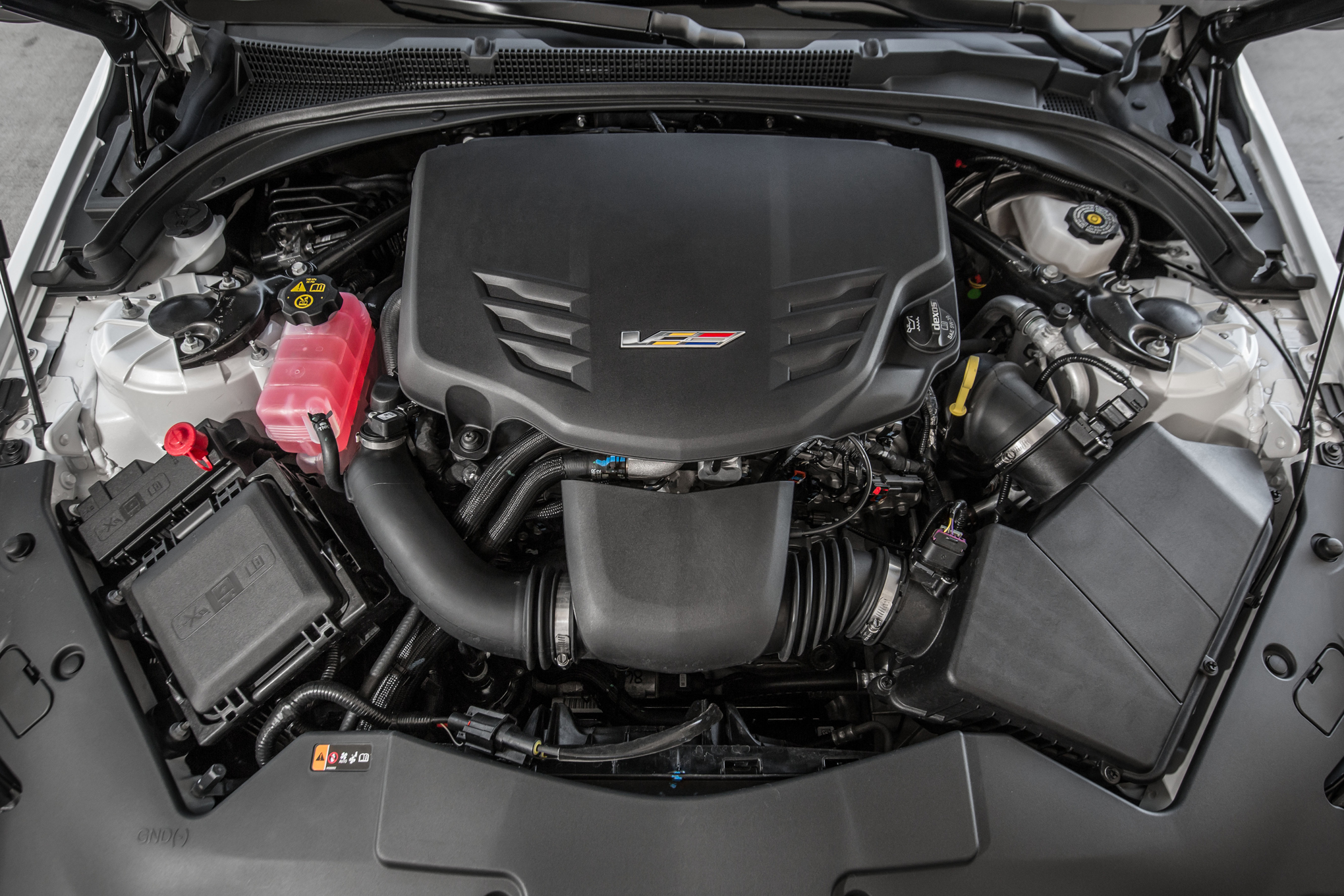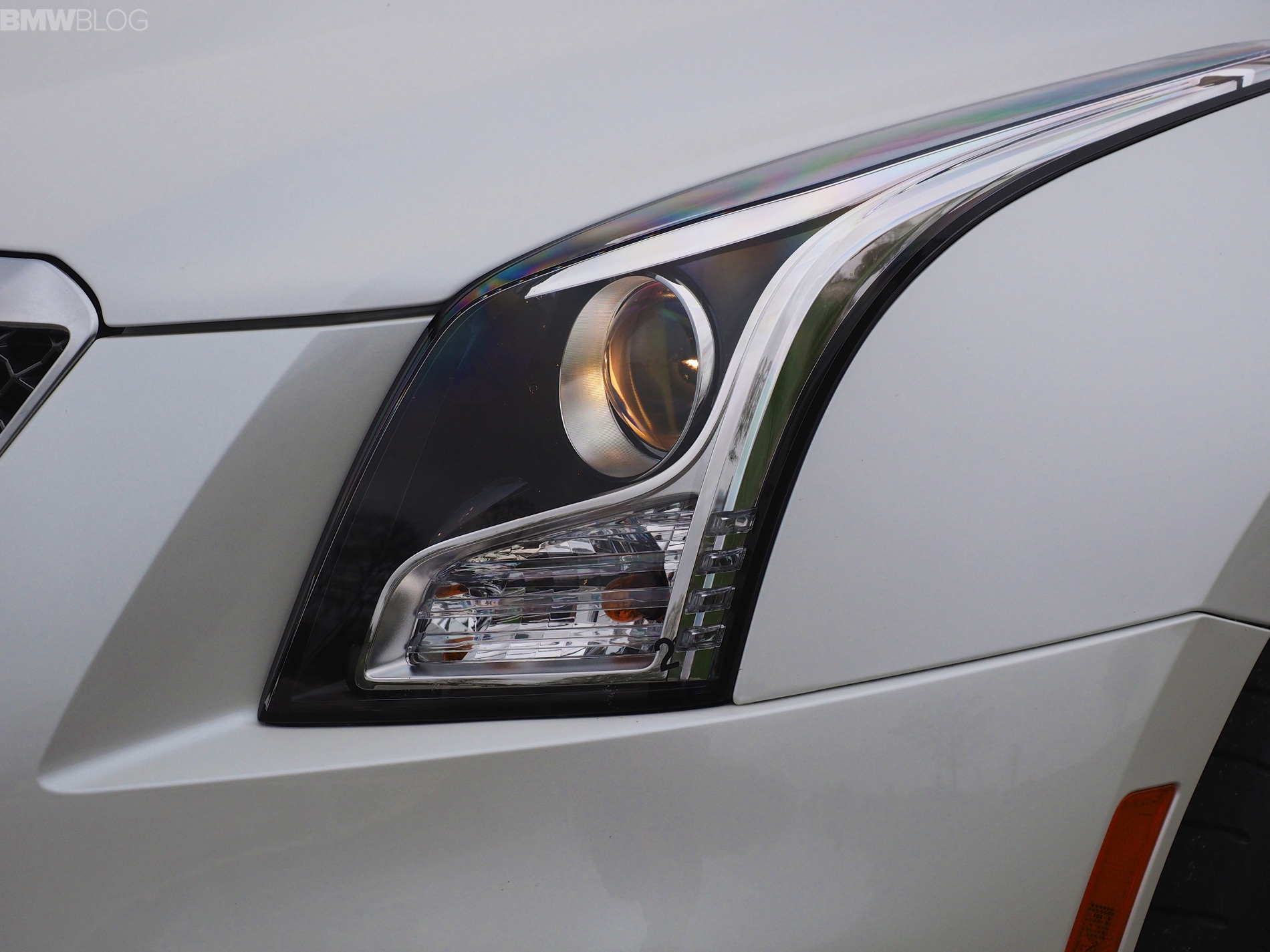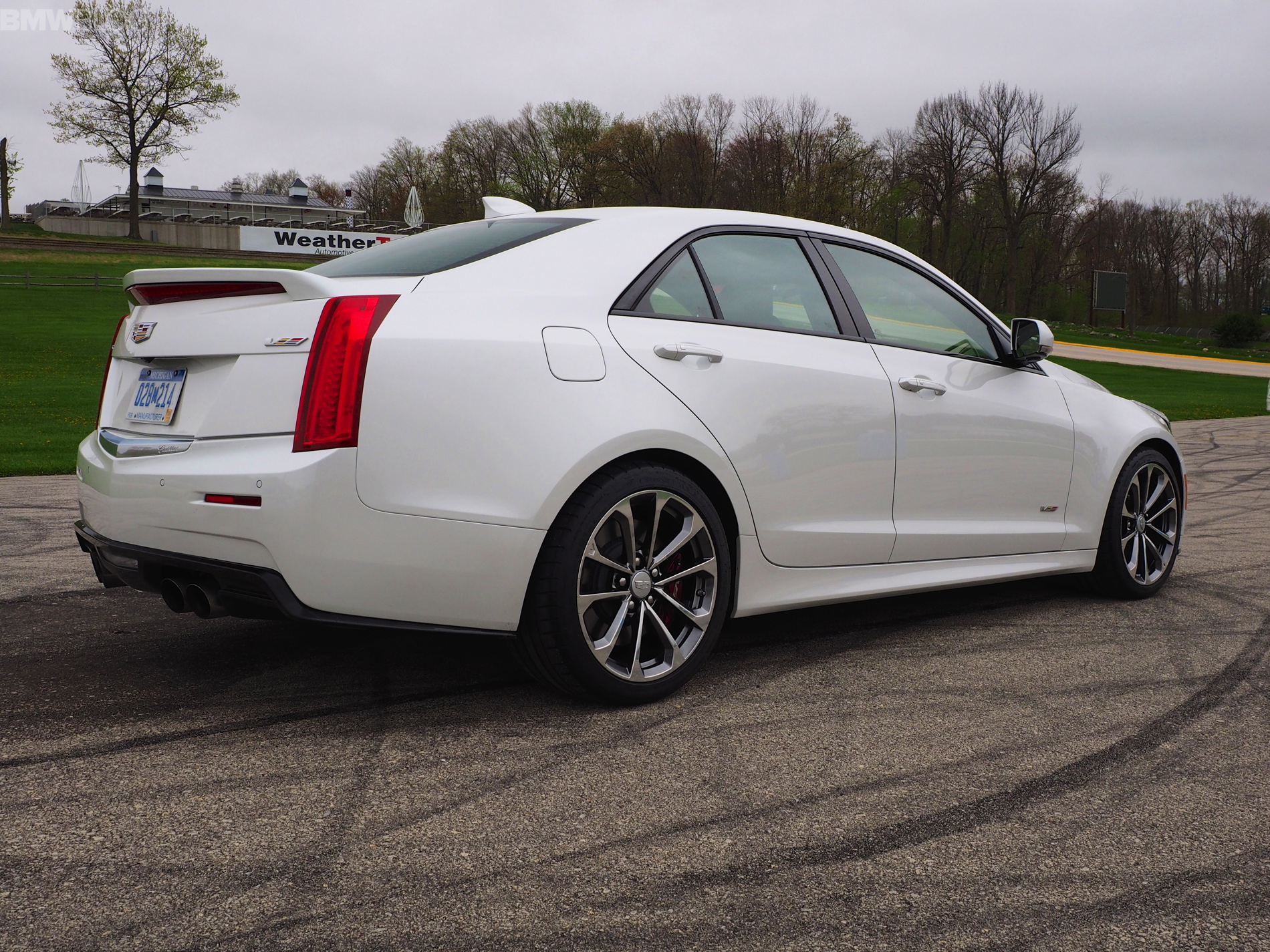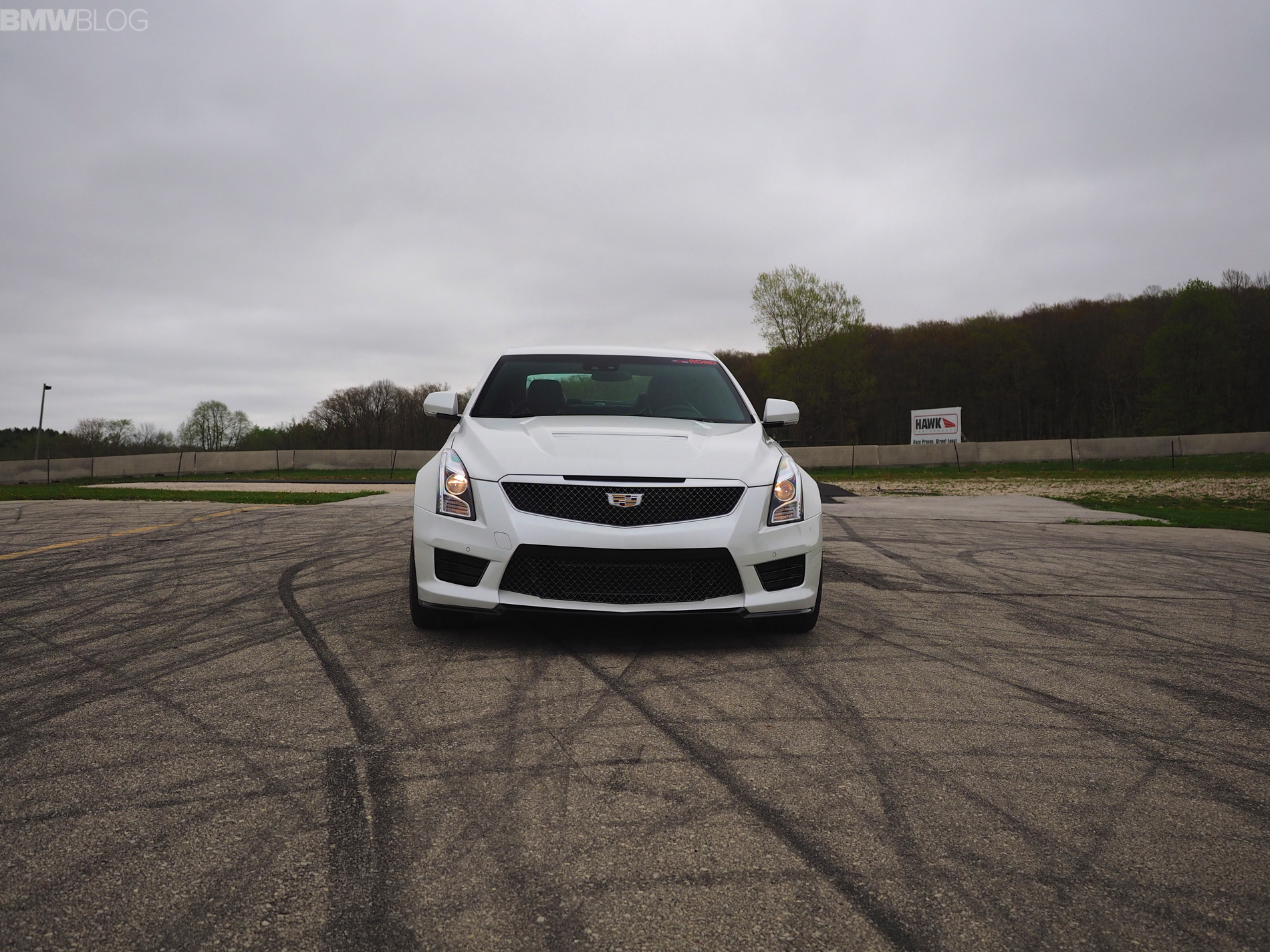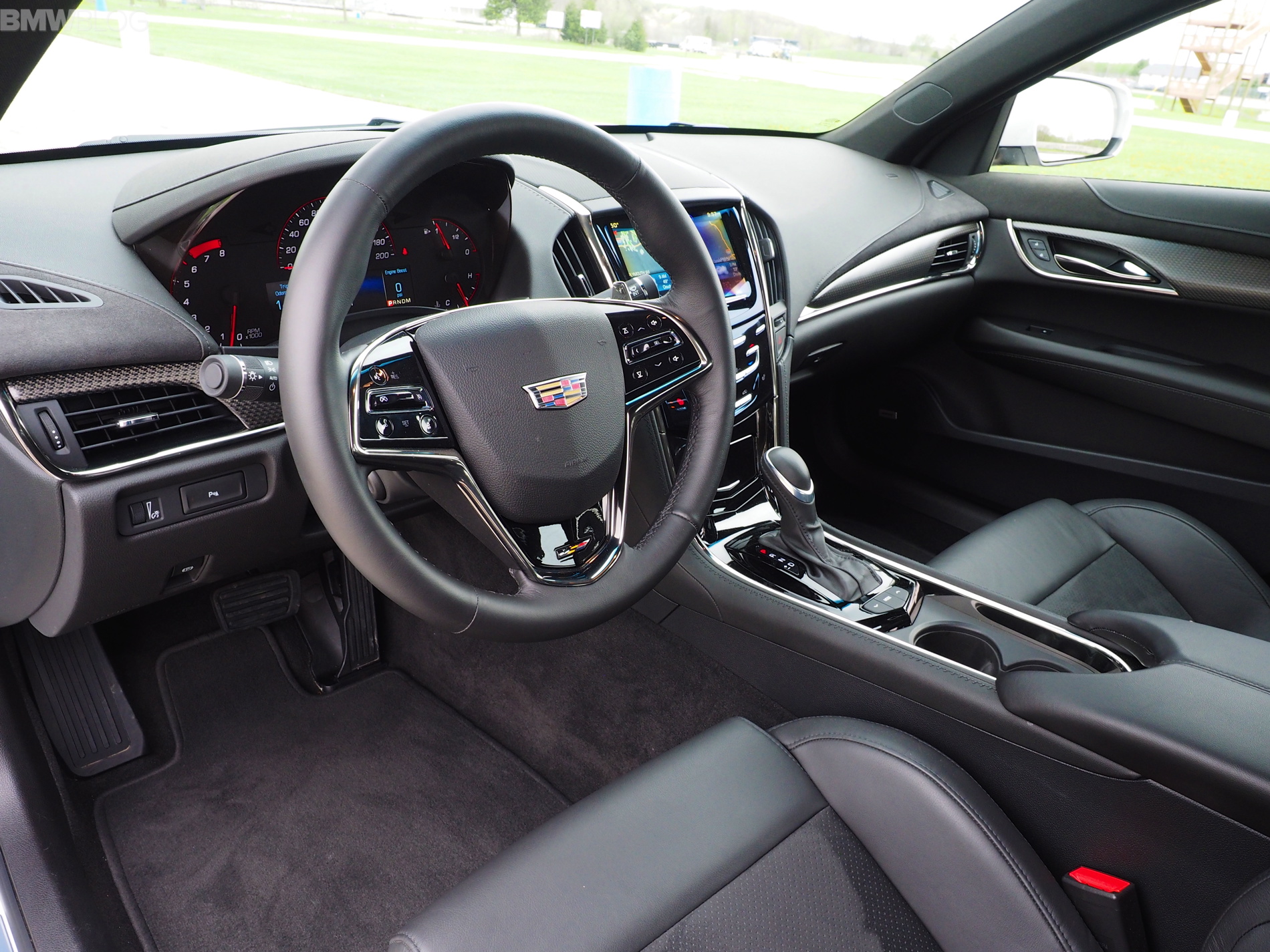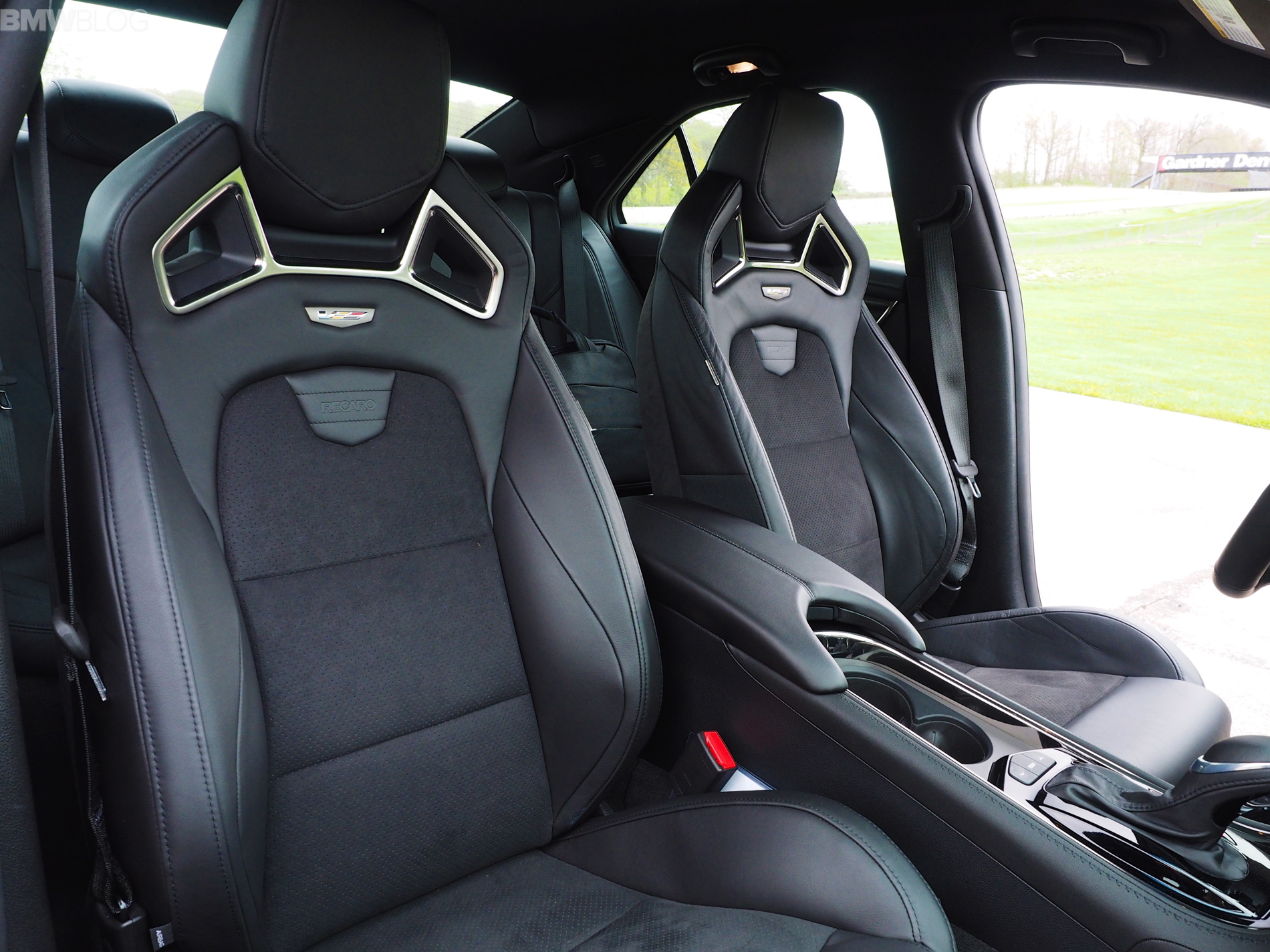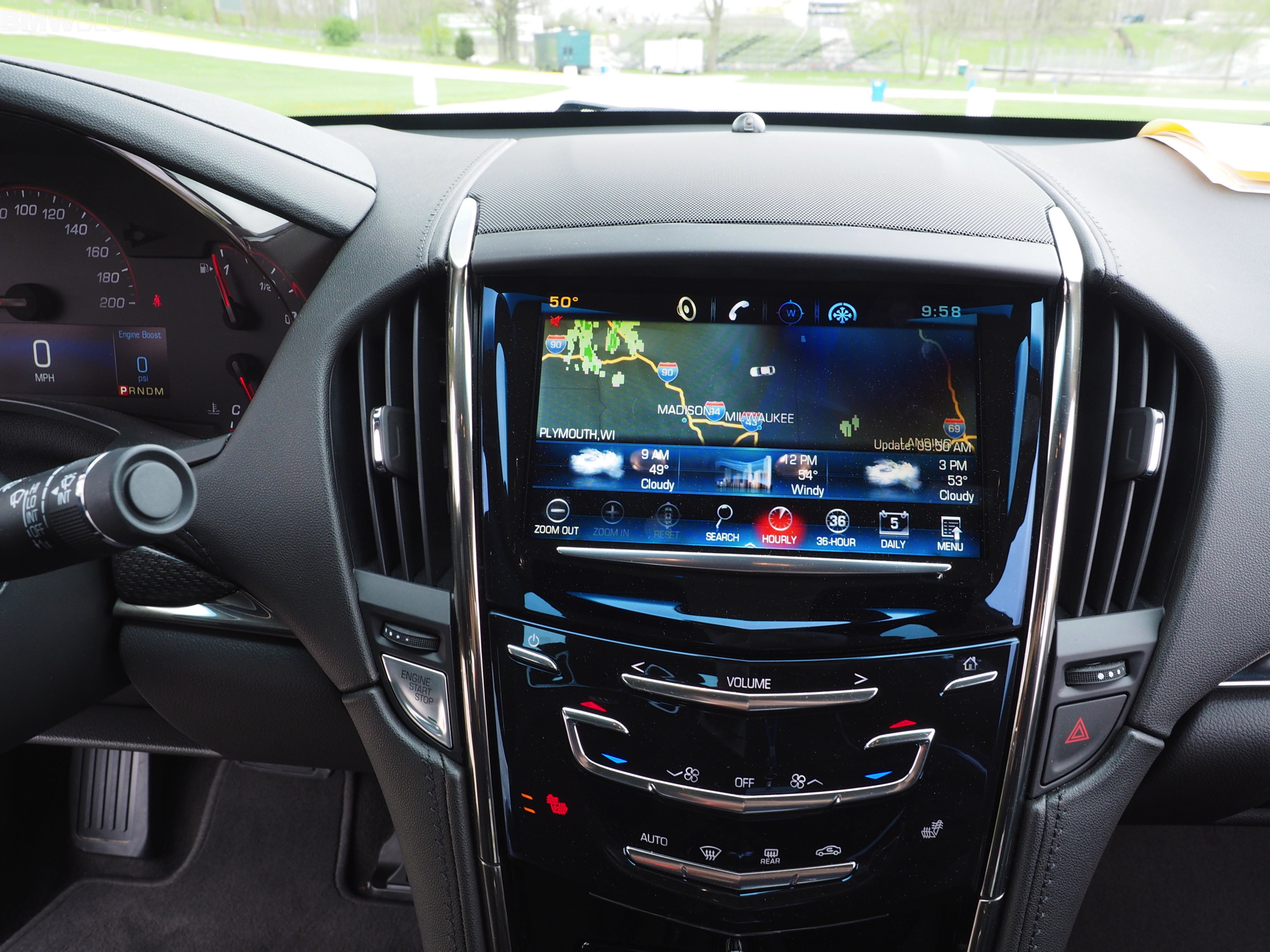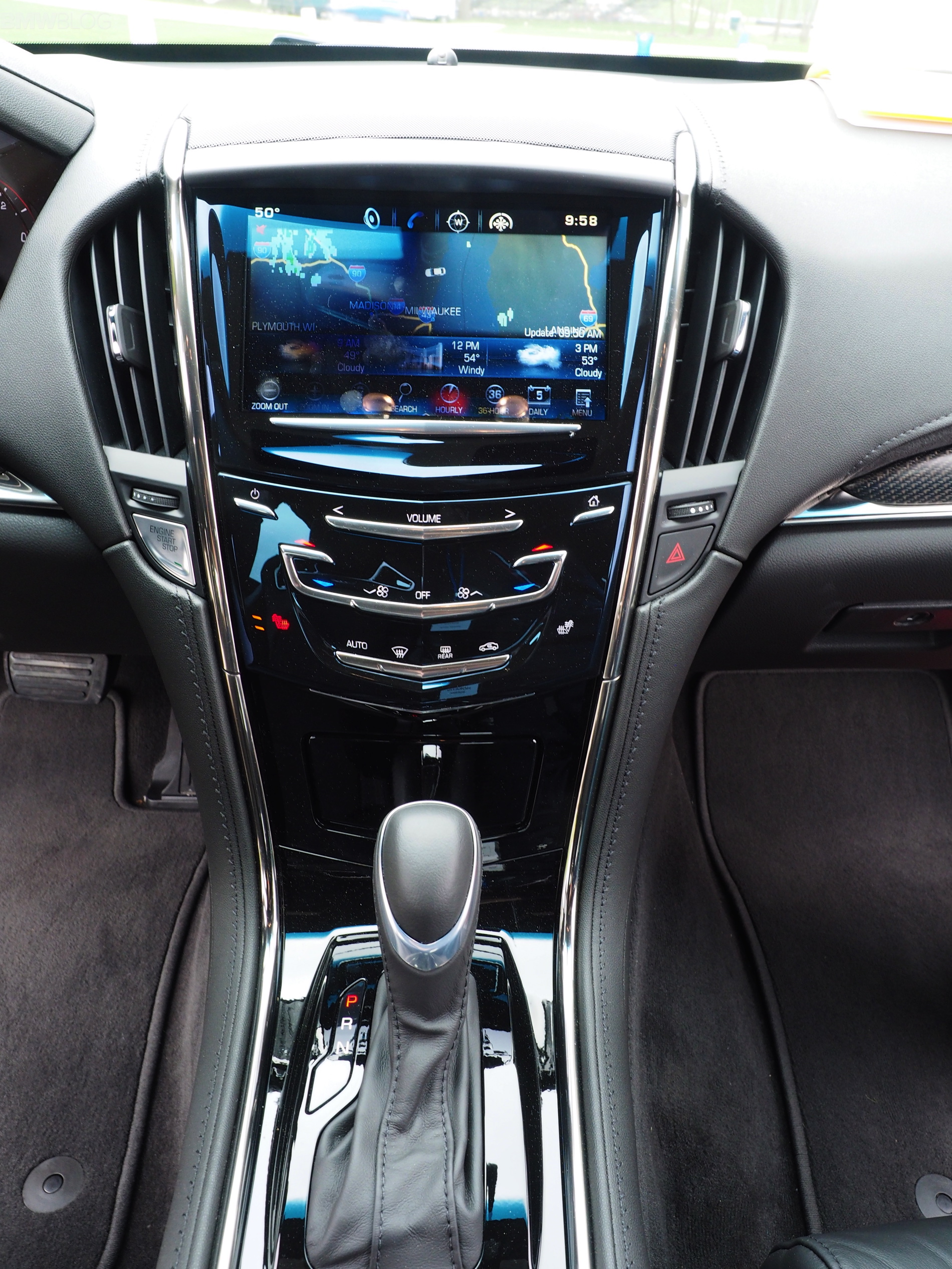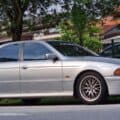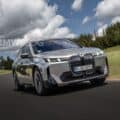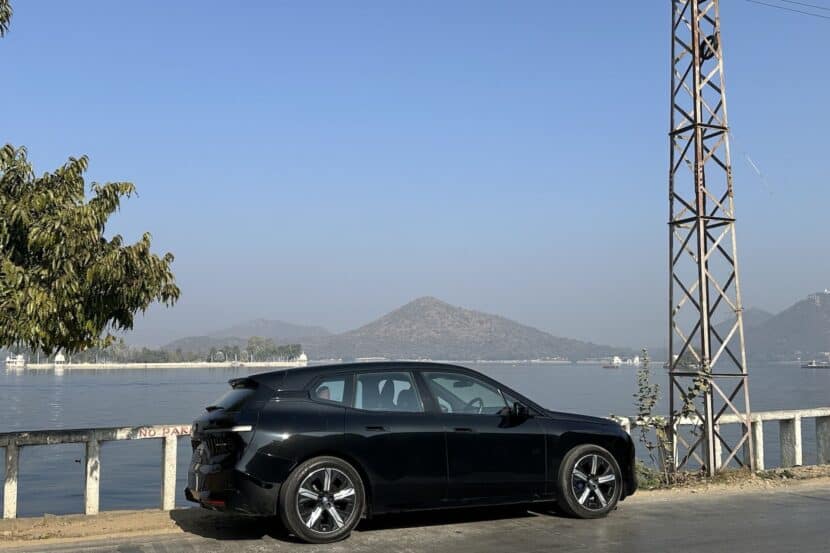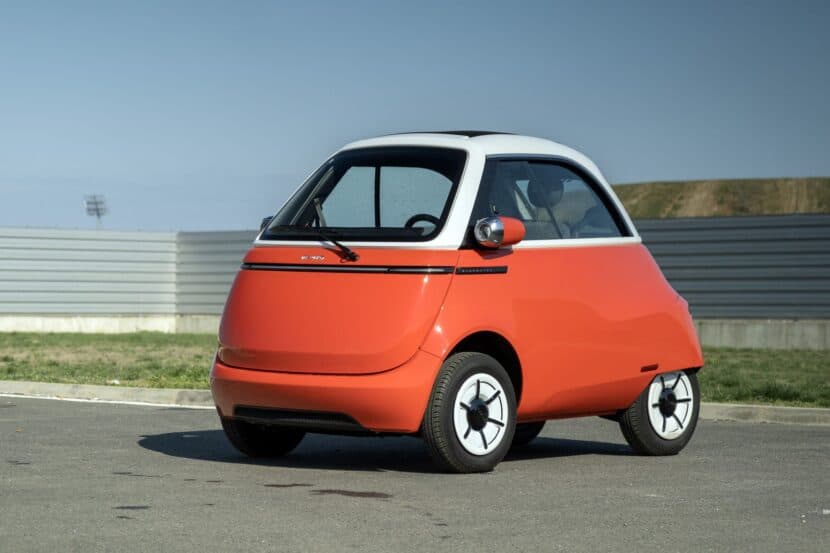When Cadillac unveiled the ATS-V at the 2015 Detroit Auto Show, the automotive world was eager to see how it fares against the new BMW M3 and M4. After all, the ATS-V used the almighty E90/E92 M3 as a benchmark in order to build a sports car that doesn’t have to compromise between driving on the road and on the track. To see how the ATS-V stacks up against the F80 M3 and F82 M4, we headed to Road America race track in Wisconsin, with a pit stop in Milwaukee for some backroads driving. Before jumping in the car, we spent some time with Cadillac’s folks to learn more about the development of the ATS-V.
The man behind Cadillac’s sporty coupe and sedan is Tony Roma, a Cadillac engineer who’s had a hand in all the V-models and is the chief engineer of the upcoming CTS-V as well. He was also the chief engineer on the Camaro ZL1 and managed the engine program for Cadillac’s CTS-V World Challenge cars. And he’s a club racer. So the man has all the ingredients and skills to create one of the sportiest Caddys to date. Roma was very upfront about the previous M3 being the target, as far as driving dynamics. “We benchmarked the E92 M3 from a performance perspective, but the goal was not to out-BMW BMW,” Roma said. “We wanted to create a car that offers the perfect balance between the road and the track. We call it bi-modal,” Roma added. E92’s precise steering and tight chassis were at the top of the requirements list.
When questioned about the new F80/F82 models, Roma said that his engineering team has adjusted the metrics and requirements to anticipate what the new M3/M4 might offer. They even went as far as picking up a car in Munich, break-it in and take it directly to Nurburgring to track and measure its performance. Pricing of the new ATS-V is not that far off from the M3/M4; the sedan starts at $60,465, and the coupe starts at $62,665, compared to $62,950 for M3 and $65,150 for M4.
Engine
The ATS-V features a twin-turbo 3.6 liter V6 with reworked internals including an upgraded valvetrain, charge-air cooler, titanium connecting rods, and low-inertia titanium-aluminide turbines. All of those help reduce turbo lag. The LF4 engine was imported from the CTS Vsport and was tweaked for more power: 464 horsepower and 445 lb-ft of torque, 39 more ponies than the M3/M4 and 14 hp more than Audi RS5 (450 hp, 317 lb-ft). The V8-powered Mercedes-AMG C63 makes 476 hp and 479 lb-ft.
Roma mentioned that gasoline is fed at 2,900 psi to maintain optimum fuel delivery and pulse precision even at 1.25 lateral g. For those drivers with the track in mind, the V6 comes with a dedicated oil-cooler and high-velocity pump.
The power output is enough to take the ATS-V from standstill to 60 mph time in 3.9 seconds, while hitting a max speed of 189 mph.
Cadillac chose two gear boxes to match the V6’s power: an eight-speed automatic and a six-speed manual. When questioned about the lack of a dual-clutch transmission, Roma said “sourcing a DCT could be expensive, unless you have one in your lineup. ” The eight-speed torque converter-equipped automatic shares some parts with the gearbox found in the Z06.
The six-speed Tremec manual features no-lift shift (enabling the driver to keep the throttle fully pressed between cog swaps in order to maintain turbo boost), disengageable rev matching and launch control. And if you hate the no-lift shift, you can can easily switching off.
Both transmissions send power rearward to an electronic limited-slip differential.
Just like the M3/M4, Caddy’s ATS-V uses an electrically assisted steering. Roma told us that the ATS-V uses the same ZF steering system as the new M3, but his engineers reworked the geometry and tuning. Cadillac says the steering is 14 percent stiffer than the standard ZF system.
Chassis & Suspension
When Roma mentioned the bi-modal character of the ATS-V, he shortly followed up with the Magnetic Ride Control adaptive suspension which plays an important role in how the car feels on the road and track. The third-generation MagneticRide Control uses four smaller magnets in each shock and a faster processor. The system uses data from 18 sensors accounting for steering angle and brake application, and it adjusts damping rates every inch of travel at 60 mph. Talk about high-tech stuff.
The goal was really to make the ATS-V more controllable while offering a wider dynamic range catering to a wide range of drivers.
Lots of man hours were spent on the chassis as well. To keep it light, Cadillac engineers used lightweight materials, like stamped aluminum for a shear panel which also improves front-end stiffness. To be worthy of being put in the same class with the likes of the M3, the ATS-V’s turn-in quickness and steering response had to be worked on extensively. For example, the toe links have been replaced with ball joints, six suspension bushings have been stiffened and ten have been completely redesigned, and compared to the standard ATS, the front track grows by an inch on the sedan and 0.2 on the coupe, while the rears decrease by 0.5 and 0.3 inch, respectively.
The optional carbon fiber package not only includes a more aggressive front splitter and lip, a rear spoiler, and a rear splitter, but also adds adds 10 pounds of front lift and 50 pounds of rear downforce. And if you love your ATS-V more on the track than the road, the track package removes the tire inflator kit, tow hook and sunroof, and also adds a lighter battery, black wheels and carbon-fiber hood vent.
Design
Looks are subjective so when asked whether we prefer the design of the M3/M4 or the ATS-V, we had to plead the fifth. Being so embedded in the BMW world, we learned the design language and can appreciate all of the lines, so it can difficult to stay objective when looking at other cars. But, what we can say about the looks of the ATS-V is that they are far from being subtle. The car has masculine, aggressive look that often enthusiasts are looking for. The front fascia stands out with angular and sharp lines, the headlights are massive, yet elegantly wrapped around the fender, while the crosshatch grille is not only a looker but also functional. Caddy’s spokesperson Donny Nordlicht says the grille mesh has been pared back allowing more air to be flown through.
Specially-engineered Michelin Pilot Super Sports tires are installed on the ATS-V, measuring 255/35R-18 in front and 275/35R-18 out back. The 18 inch wheels leave enough visual room for the Brembo brakes to be seen — 4.6-inch discs up front with six-piston calipers and 13.3-inch discs with four-piston calipers in the rear.
Quad exhaust tips round out the exterior.
But the interior is a different story. From the first moments inside the car, we felt that the $60k price tag should offer a bit more interior. Using lots of design cues from the ATS, the cabin of the ATS-V is too glitzy with a strange combination between shinny materials and carbon fiber trim. And the glossy black plastic of the center console is still prone to preserve every greasy fingerprint.
The M3’s cabin feels more premium, minimalistic and non-intrusive. The true driver-oriented cabin that BMW has been perfecting for decades.
We did love though the 18-way adjustable Recaro bucket seats wrapped in leather with faux-suede inserts and matching stitching. The steering wheel is thick and offers a nice grip, especially when pushing the car into corners. We’re going to stay away from analyzing too much the infamous CUE system; it’s still years behind the iDrive infotainment and what other automakers offer.
On The Road
From Milwaukee to Elkhart Lake, we took the coupe model through about 100 miles of backroads. A car with over 400 horsepower is simply a tease on regular roads, regardless if it’s a Cadillac or a BMW, so best you can do is to keep the car in a lower gear and rev it up to redline, which in the ATS-V comes up real quick. The car has pull and certainly feels stiffer than the standard ATS. But is it better than the M3/M4? Despite the fairly short ride, we can say that BMW’s legendary M car feels like car that is in its fifth iteration: more refined, more planted on the road and while the engine is a bit smoother.
When pushed hard, the ATS-V also seem to swerve subtly off course but we attribute that to the rear suspension geometry of the ATS-V. Which is something that some drivers might enjoy.
The Touring mode matches the Comfort setting in the M3 and it’s recommended for those looking for an elegant and pleasant ride. The car lives up so far to the half of its bi-modal characterization. For the length of this short trip we used the eight-speed automatic version which can pull shifts with the best of the DCTs. We believe it’s better than the dual-clutch found in the E92 M3 and not far off of the DCT in the new M3/M4, which is arguably the best in business.
The driver input-feedback system is engaging and enjoyable, and the shift paddles make for a fun ride.
Bose tuning plays down unrewarding frequencies in the cabin while emphasizing the ones that matter. Cadillac refrains from calling this Active Sound.
On The Track
Second day was reserved for some track time at the fast and less technical Road America track. We picked the manual ATS-V this time with the track package and we got in line in a cold morning. The track briefing focused on safety and how unforgiving this track is, especially with cold rubbers and even colder tarmac. The general recommendation was to drive a tad slower than your potential and attack late the Apex, without any braking in corners. To slow down the entire group, a set of chicanes were also put in place.
But we still managed to get at speeds higher than 120 mph, enough to form an initial opinion. First, the ATS-VS’s manual gearbox is a fun one and reminded us why we love the six-speed in our 1M. We used the no-lift shift function which allows the accelerator to stay mashed in between shifts; it takes a bit to get used to this, but it’s a useful feature. The rev-matched downshifting also worked flawlessly, even thought it might not be for everyone.
The torque and power are delivered linear, similar to a naturally-aspirated engine and exiting corners is quite fun. No one questions the different characters of the V6 and BMW’s in-line six. While the V6 offers arguably a better torque curve, the 3.0 liter six-cylinder in the M3 feels more linear. Without back-to-back hot laps, it’s not fair to draw a conclusion here.
What we noticed immediately though was how easy the ATS-V turns in while responding well to steering input. Just like the M3/M4 on track, the body roll is nearly undetectable and understeer or oversteer only occur if the driver makes a mistake. The car is trained to respond quickly to your inputs and likely most drivers won’t use the car not even half of its potential. The ATS-V certainly exceeds expectations when it comes to steering feel at high speeds, but again, BMW’s longtime experience in racing and motorsport gives the new M3 a more tactile feedback.
The Michelin Pilot Super Sports are good, really good even, and even on the cold tarmac, they were grippy.
Where the ATS-V excels is in the braking department. The Brembos are capable of reducing speed dramatically over short distances and they inspired confidence every time we used them.
Caddy offers a Performance Traction Management (PTM) with five settings, each adjusting torque output, yaw control and traction control. Five is the highest setting, the equivalent of BMW’s MDM setting.
Conclusion
As soon as we returned from Road America, a lot of people began to ask us whether the ATS-V lives up to the expectations and if it’s a better car than the M3. After all we spend a lot of time behind the wheel of BMW cars and that should give us plenty of credentials. But drawing a conclusion this time is not as easy as it has been with previous comparisons. We tested the cars in different conditions and many months apart, so the subjectivity factor could kick in here. But what we can say is that both cars are brilliant in their own way, having distinct characters. When chief engineer Roma asked what we thought of the ATS-V compared to the M3, our answer was simple: “They are the same, yet different.”
The M3 has matured over the years and grown into a more luxurious, pleasant and high-tech machine. It is far more civilized than previous generations and that’s a choice BMW has made consciously. But with a push of a button, it can turn into an offender that would put a smile on your face.
In our point of view, Cadillac went all in with the ATS-V. It’s one of those cars that has the luxury to start with a blank sheet of paper and with enough resources, you can turn into whatever you please. It shows that Cadillac is hard at work to change the previous brand image — soft and extremely luxurious machines. The ATS-V is definitely a track-capable car and it’s impressive that it manages to stand up to the Germans even in its first iteration. Cadillac has stepped up with a seriously competitive car and needs to be taken seriously by everyone.
Although a simple tally might give M3 the win — being a more well rounded package — we need to spend more time in each car before making a final call.
2016 Cadillac ATS-V
Exterior Appeal - 8.5
Interior Quality - 8
Steering Feedback - 8.5
Performance - 9
Handling - 8.5
Price Point - 8
8.4
The ATS-V is definitely a track-capable car and it's impressive that it manages to stand up to the Germans even in its first iteration. Cadillac has stepped up with a seriously competitive car and needs to be taken seriously by everyone.



